I review books about witches. I like witches as a feminine archetype, witch history, gothic horror, autumn, folklore, folk horror & magical realism.
Don't wanna be here? Send us removal request.
Text

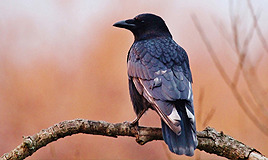
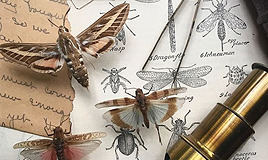
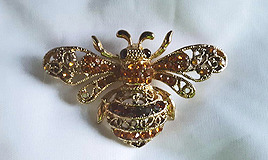


Weyward by Emilia Hart
Published: February 2, 2023 Publisher: HarperCollins
The Author
Emilia Hart is a British-Australian writer. She was born in Sydney and studied English Literature and Law at the University of New South Wales before working as a lawyer in Sydney and London. She is a graduate of Curtis Brown Creative’s Three Month Online Novel Writing Course and was Highly Commended in the 2021 Caledonia Novel Award. Her short fiction has been published in Australia and the UK. Weyward is her debut novel. She lives in London.
˗ˏˋ ´ˎ˗
The Story
In Weyward, the narrative intertwines the lives of three women spanning five centuries. In 2019, Kate seeks solace in Weyward Cottage, escaping from London and her abusive partner. She slowly unravels a mystery hidden within the cottage's history, hinting at secrets from her great aunt's past and the 17th-century witch hunts. In 1619, Altha faces trial for a murder she didn't commit, relying on her unconventional nature magic to defend herself against accusations of witchcraft. Meanwhile, in 1942, Violet feels trapped by societal constraints and the prison of her family's estate, yearning for freedom and the memory of her mother, who was rumored to have gone mad before her death. The only remnants of her mother's existence are a locket marked with a mysterious "W" and the word "weyward" etched into the bedroom's baseboard. This novel masterfully weaves these women's tales together, revealing a compelling narrative of strength across generations and the transformative influence of the natural world.
˗ˏˋ ´ˎ˗
The Vibe: family lineage, nature magic, self discovery, witch trials, feminine strength, betrayal, forging your own path
The Style: historical fiction, magical realism, multiple povs, part epistolary, part narration, emotive
Trigger Warnings: imprisonment, domestic abuse, spousal rape, car accident death, entrapment by pregnancy, emotional abuse, suidical ideation, mention of stillbirth, “hysteria”, hysterectomy, abortion, misogyny
˗ˏˋ ´ˎ˗
The Review
I picked Weyward up on a whim and am so pleased that I did. Historical fiction mixed with magical realism and a dash of incredibly rich writing made it a real pleasure to read. The narrative weaves between three women across five centuries, deftly showcasing the myriad ways in which women demonstrate resilience and bravery under difficult circumstances.
Being totally honest, I often struggle with split narrative timelines in novels. I can’t be the only one who has found themselves bored with one section of a book, willing the boring chapters to end in order to get back to the characters I am invested in… right? Thankfully, Weyward’s leading ladies are all so fabulous and their stories so engaging, that I was invested in each timeline equally. This actually sped up my reading as the story progressed, as I wanted to find out how each character was doing in their timeline more and more desperately. If you want to read a moving story with wonderful characters that emphasizes the transformative power of nature, please pick this up!
Witch. The word slithers from the mouth like a serpent, drips from the tongue as thick and black as tar. We never thought of ourselves as witches, my mother and I. For this was a word invented by men, a word that brings power to those who speak it, not those it describes. A word that builds gallows and pyres, turns breathing women into corpses.
One thing I will say before really digging in to the review, is that there are a lot of trigger warnings for this novel (see above for a summary). Reading through the list, it may seem that this is a tome of sheer doom and gloom, but it actually didn’t feel that way to me. Obviously, a lot of the trigger warnings may be Hard Nos for some people, and that’s totally fair, however I found this story so engaging and the characters so strong, that the TWs didn’t beat me down as much as they could have. Being set across five centuries, this book explores a number of methods by which patriarchal societies abuse women. From the outright cruelties of the 17th Century to the more insidious offences of modern society, there is a lot of violence and misogyny at work here. It can get difficult in parts, but I found myself uplifted by the women’s strength in the end.
Now, I’ve discussed how strong the characters are; let me properly introduce them to you! Kate, living in her 2019 timeline, wants to escape a violent partner and discover the truth about her family. Violet, in 1942 and the midst of the Second World War, wants to escape the societal confines and expectations of femininity and live a life she chooses. Altha in 1619 just wants to survive. I loved them all. I cared about them all. I may have even shed a tear or two over them (and books don’t make me cry super often). I particularly loved Violet and her sheer determination to live her own life. I really appreciated seeing her as a teen from her own perspective, as well as from Kate’s perspective looking back at Violet as an old woman. (I want grow up to be an eccentric old lady with the witchiest house in the world just like her!) The interlacing of their stories is so well conceived, it really feels like you’re seeing a cohesive timeline rather than random sections plonked together.
Perhaps one day, she said, there would be a safer time. When women could walk the earth, shining bright with power, and yet live.
There is so much witchcraft detail in this book, dropped in so sneakily and creatively, I just loved it! All the leading ladies have Witch Marks (which definitely need to be used in witchy stories more frequently), but they’re not overly emphasized… they’re just there and mentioned in passing in various subtle ways. The way the Familiars work is also super cool; not every animal can be a familiar, and they aren’t necessarily easily controlled, but they provide emotional support and do their witches’ bidding when needed. I especially loved the constant presence of the crows, which at first seem wild and dangerous, but eventually become as important to the plot as the leading characters as symbols of power. And I love, love, love how the magic stems so much from the witches’ connection to the natural world. It just felt so right to me.
One notable factor in Weyward for me was how deftly Emilia Hart wove historical facts into the narrative. From the Lancashire Assizes to the Pendle Witch Trials and King James I and his obsession with Witch Hunts, Altha’s timeline felt so based in history as to be almost visceral. This sort of thing really happened to living women. I was especially impressed by the use of the Great Comet of 1618; Hart definitely did her research in order to place her story firmly in the real world, with an additional magical touch.
There was something about us – the Weyward women – that bonded us more tightly with the natural world. We can feel it, she said, the same way we feel rage, sorrow or joy. The animals, the birds, the plants – they let us in, recognising us as one of their own. That is why roots and leaves yield so easily under our fingers, to form tonics that bring comfort and healing. That is why animals welcome our embrace. Why the crows – the ones who carry the sign – watch over us and do our bidding, why their touch brings our abilities into sharpest relief.
Weyward has become one of my favourite reads for 2024, and has 100% got a solid seat in my Top Ten of the Year. It is endlessly impressive to me that is was Emilia Hart’s DEBUT NOVEL. Seriously, my hat is off to her for creating a story that felt so real and so magical at the same time. I will definitely be reading more of her work as it is published. If my recommendation isn’t enough, Weyward also won Goodreads’ Best Historical Fiction title in 2023. And if you buy a physical copy of the book, you get a neat little flip book of a crow flying in the page corners. If all that doesn’t sell it to you, I don’t know what will.
#Weyward#Emilia Hart#book review#bookblr#reading#books#witch fiction#witches#witchy#witchblr#witchy books#witchcore#witchy vibes#witch#witch books
31 notes
·
View notes
Text






Kiki's Delivery Service by Eiko Kadono
Published: June 1, 2021 Publisher: Sourcebooks Fire
The Author
Eiko Kadono is a Japanese author and has published nearly two hundred original works, most of which are books for children. In 1985, she published the children's novel Majo no Takkyūbin, which was later adapted into the Hayao Miyazaki animated film with the same title. Both the novel and the film are known by the English title Kiki's Delivery Service. The book was awarded the Hans Christian Andersen Award, among others, and she followed on this success with four sequels in the same series. She lives in the Kanagawa prefecture of Japan.
˗ˏˋ ´ˎ˗
The Story
Half-witch Kiki never runs from a challenge. So when her thirteenth birthday arrives, she's eager to follow a witch's tradition: choose a new town to call home for one year. Brimming with confidence, Kiki flies to the seaside village of Koriko and expects that her powers will easily bring happiness to the townspeople. But gaining the trust of the locals is trickier than she expected. With her faithful, wise-cracking black cat, Jiji, by her side, Kiki forges new friendships and builds her inner strength, ultimately realizing that magic can be found in even the most ordinary places.
˗ˏˋ ´ˎ˗
The Vibe: coming of age, whimsical, cosy, episodic adventures, wholesome, quirky, comfort read
The Style: japanese translation, children's literature, middle grade, chapter book, cute illustrations
Trigger Warnings: none
˗ˏˋ ´ˎ˗
The Review
Writing this review in 2024, I'd be surprised if you hadn't already seen, or at the very least heard of, Studio Ghibli's 1989 film Kiki's Delivery Service. As with all Ghibli movies, it is a lovingly animated piece with quirky characters and a wonderful soundtrack. Less people may be aware that, rather than being an original screenplay, the movie was based off the 1985 children’s novel of the same name.
According to Kadono, the story itself was inspired by a drawing her daughter drew of a witch flying through the sky with a radio, musical notes dancing around her. When creating Kiki, Kadono framed the character around her own daughter, who was also 12-years-old at the time. Drawing inspiration from her own daughter definitely brought life to Kiki, who experiences thoughts and feelings that all young girls go through in a considered and realistic way. I feel that this is the true heart of the story, and is why it touched so many people when it hit the big screen. The book itself is written for Middle Grade readers, and is a very simple story that adult readers could knock out in a day.
“I want everything to be brand-new - my clothes, my shoes, my broom, too. I want to be reborn. I’m sure Mom’ll say, ‘You’re from a long line of witches, so you need to value the old.” But I’m me. I’m a new witch.”
As with the film adaptation, the novel starts with Kiki preparing to leave home for her “Coming-of-Age” day, an event which kick-starts the year of mandatory independence that every 13 year-old witch is required to undertake. (It gives me a Pokémon vibe; how such young characters are encouraged to leave home to undertake some huge adventure on their own.) Kiki is confident in herself in the way only a child could be. She’s ready to start her life on her terms, but over the course of the story she begins to grow and experience cute developmental moments that show that she is moving on from childhood and becoming more knowledgeable about the world around her. These moments really show Kadono’s understanding of young girls like her daughter. Kiki begins to have doubts and questions about how things work as she settles in her new town, but still manages to make herself a little home above a shop owned by the lovely Osono, a friendly and heavily pregnant baker. If more people were like Osono, maybe kids could actually have more wholesome adventures out in the world??
How can I discuss Kiki without talking about her familiar, the black cat, Jiji? Within the lore of the book, a new-born witches’ mother searches for a black kitten born around the same time as her daughter, so that they can be raised together (super cute!). As they grow, they develop a special relationship and learn to communicate in their own language that no one else can understand. It turns out that Jiji is particularly sassy and can be a little cranky, but always comes through for Kiki when she needs help. While he can talk, Jiji is very much a cat, “Jiji shot her a reproachful glance and then made up his mind to ignore her altogether.” If you liked Jiji in the movie, you won’t be disappointed in his book counterpart; he’s just the best, and a good companion for Kiki as she sets off into the world on her Coming-of-Age day.
“Gradually, everyone’s waving hands below grew harder to see, and all the lights of the town twinkled like a starry night turned upside down. The full moon hung in the sky, watching over Kiki. Eventually even the lights of the town faded, and all she could see below were mountains shaped like the dark backs of animals.”
Kiki chooses to settle in a seaside town called Koriko, and most of the novel focuses around her living in Osono’s spare room and running “Kiki’s Delivery Service”, her own small business. She meets a whole bunch of unusual characters, some of whom would fit perfectly into a Roald Dahl story. Her slow ingratiation into the hearts of the town is well done, considering the episodic nature of each chapter and the simplistic narration. In the witchy tradition of Kadono’s universe, Kiki doesn’t accept payments for her deliveries; she takes small things in return like food or being taught a new skill. In this way, she grows as a person and becomes more self-sufficient, while still experiencing typical tween-girl issues like dealing with crushes, “Mysterious? Is that how I’m supposed to act? Maybe there’s something wrong with me?” The book walks the fine line between simple writing and slightly deeper exploration of Kiki’s character extremely well.
While the film is very faithful to the core characters, especially Kiki, Jiji and Osono, there are a number of plot differences in the book. The young painter who lives in the woods is there, although she doesn’t play as large of a role in the novel. Tombo is also a side character, and while he is still a friend of Kiki’s there are a few major differences in his storyline, although they still have a cute, innocent courtship. The novel gives more emphasis to the various jobs that Kiki completes in her career as a flying courier, and no major crisis of confidence occurs that causes Kiki to forget how to fly her broom or talk to Jiji. Like I said, this is a children’s book, and even small amounts of movie melancholy aren’t present; it’s sweet and heart-warming rather than inserting drama for the narrative’s sake.
“Kiki, make sure you come back, all right? We’re so happy to have a witch as our neighbor. Everyone says that if they go three days without seeing you flying through the sky, they feel like something is missing.”
If you’re a big fan of the Studio Ghibli film, this book is worth checking out, if only to spend a little bit more time seeing Jiji being the sass master that he is, but remember that it is very much a children’s book and therefore a super simple read. I would definitely recommend it for younger readers, particularly if they enjoy stories like The Worst Witch by Jill Murphy. Kiki’s Delivery Service is very cosy and wholesome; if you feel like reading the book equivalent of a hot chocolate on a cold day, it’s one for you.
Rating: 🌕🌕🌕🌑🌑
[Goodreads]
#Kiki's Delivery Service#Eiko Kadono#Majo no Takkyūbin#Studio Ghibli#book review#bookblr#reading#books#witch fiction#witches#witchy#witchblr#witchy books#witchcore#witchy vibes#witch#witch books#ghiblicore#ghibli aesthetic#jiji
9 notes
·
View notes
Text

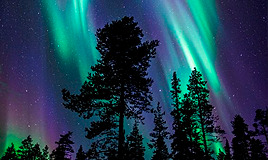



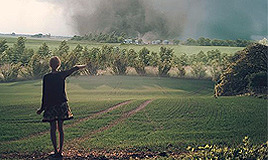
The Nature of Magic by Rachel Griffin
Published: June 1, 2021 Publisher: Sourcebooks, Inc
The Author
Rachel Griffin writes young adult novels inspired by the magic of the world around her. Born and raised in the Pacific Northwest, Rachel has a deep love of nature, from the mountains to the ocean and all the towering evergreens in between. The Nature of Witches and her subsequent novel Wild is the Witch were both New York Times bestsellers.
˗ˏˋ ´ˎ˗
The Story
For centuries, witches have maintained the climate, their power from the sun peaking in the season of their birth. But now their control is faltering as the atmosphere becomes more erratic. All hope lies with Clara, an Everwitch whose rare magic is tied to every season. Clara wants nothing to do with her power. It's wild and volatile, and the price of her magic- losing the ones she loves- is too high, despite the need to help control the increasingly dangerous weather. Over the course of the novel, Clara must choose between her power and her happiness, her duty and the people she cares for, before the changing climate thrusts the world into chaos.
˗ˏˋ ´ˎ˗
The Vibe: witch academia, boarding school, weather magic, wheel of the year, climate change, plant magic, slowburn romance, LGBTQ+ representation
The Style: first person, standalone, easy-going prose, young adult
Tringger Warnings: climate change, severe weather scenes, wildfires, character death, sex, negligent adult in position of power
˗ˏˋ ´ˎ˗
The Review
The Nature of Magic by Rachel Griffin is described on Goodreads as Practical Magic meets Twister, is anyone really surprised I gave it a try? The story scratched a lot of itches for me; I’m a big fan of nature magic, and have been a Climate Action advocate in my personal and professional life… and as always, I’m trying to find the next Practical Magic (my absolute favourite witch-focused series by far). While The Nature of Magic is very much a YA novel, it contains some very creative and original magical lore that makes it a worthwhile read if you like witchy stories as much as I do.
Our protagonist is Clara, a 17-year-old student of the Eastern School of Solar Magic, an institution that teaches its students to use their nature magic to combat climate change and protect the non-magical inhabitants of the world, otherwise known as Shaders, from ecological disaster. In this world, witches are born on either a solstice or an equinox and their magic is strongest in the season of their birth. There are Spring witches, Summer witches, Autumn and Winter witches. Clara’s magic is somehow tied to all four seasons, making her an Everwitch; an extremely rare trait in which her magic morphs with the seasons making her powerful year-round. Clara’s teachers haven’t seen an Everwitch in their generation, in fact she is the first to be born in over 100 years and finds her powers isolating and overwhelming. The seasonally-focused nature of the magic was, for me, the most enjoyable aspect of the story; it really demonstrated a love of the different spokes of the Wheel of the Year and the beauty to be found within each.
"Winter is the truest of the seasons. It’s what remains after everything else is stripped away. The leaves fall. The colors fade. The branches get brittle. And if you can love the earth, understand it when all the beauty is gone and see it for what it is, that’s magic."
I love the way Griffin describes the magic in this story, it feels very natural and tied both to the character’s bodies and the world around them. While Clara’s magic is “special” in the only way a YA protagonist’s skills could be, I actually preferred how the regular seasonal witches magic was written: Springs are calm and project this vibe outwards, Summer’s magic is “a constant rush, strong and powerful,” Autumn’s magic “builds on an undercurrent of thankfulness and sorrow”, and Winters are very straightforward- “what you see is what you get” with them. Another interesting concept that Griffin developed was that witches gain their power from the sun, and can lose their magic permanently by depletion through severe overuse, or being in the path of totality during a solar eclipse. The novel utilises depletion by overuse to demonstrate the increasingly fragile global climate, as witches worldwide find it more and more difficult to manage the Earth’s severe weather and begin losing their magic and their lives as a result. Meanwhile, Clara has a more personal struggle as she grapples with the idea of stripping herself of her magic intentionally during an upcoming solar eclipse.
Typical of any YA protagonist, Clara is absolutely swimming in tropes. She is singled out as The Chosen One from chapter one, being the only known Everwitch and thus The Only Hope in managing the worsening climate crisis by harnessing the magic of every season. She’s Not Like Everyone Else. Her magic is tied to her emotions, and seeks out those closest to her, resulting in the deaths of numerous loved ones including her parents and more recently, her girlfriend Nikki. Clara struggles with the responsibility forced upon her; her powers are overwhelming and she lashes out at anyone who forces her to use them (which is fair, as only one adult in the story seems to have any sense or consideration for her trauma at all). This all comes to a head when Sang Park, a Korean AP Botany student, is brought in to help train her. And he’s super cute.
"We’ve tried to adapt and handle the shifting atmosphere on our own, but we can’t keep up; it’s as if we’re blowing our candles when the whole house is on fire."
What would a YA novel be without a romance subplot? Thankfully, Sang is a lovely counterbalance to Clara’s sometimes overwrought teen angst, bringing his Spring magic and plant-whispering skills to the school and, with some difficulty, into Clara’s life. He is initially brought in to train Clara in the use of her magic, however these lessons tend to blend together in a “one step forward, two steps back” series of events which slow the pace of the book somewhat. Later on, there are some lovely scenes of communication between the two through the plants he grows (a kind of melancholy Floriography that I found lovely.)
As I mentioned earlier, the pacing of the book could have been improved with a shortening of some sequences, but overall, I really enjoyed the story. Some readers may think the climate change message a little too on the nose, “-no one wants to hear they’re part of the problem- that they are the problem now”, but I think a message like this needs to be on the nose at this point.
Finally, before I wrap up, I want to give a shoutout to a few additional points that I enjoyed: Clara is a good example of bisexual representation (yay!), Nox the cat is super cute (what would a witchy story be without a cranky black kitty?), and the excerpts from the ficticious book A Season For Everything which open each chapter are a wonderful world-building choice.
"I’ve had moments of despair and deep resentment. But then I stand outside and touch the earth, feel the magic in my fingertips, and understand that this is how it’s meant to be. The sun and stars conspired for me, and I am filled with gratitude."
I asked Rachel Griffin whether she'd ever return to the universe, to which she replied, "I'd never say never, but I don't have any plans to return to that world at the moment. I would have to come up with the right idea, but if I did, I wouldn't be opposed to it!" I would consider this a standalone for now, but I'm keeping my fingers crossed that Griffin returns to this story sometime in the future, as there is plenty of potential for a deeper exploration of the magical lore she has created.
Rating: 🌕🌕🌕🌗🌑
[Goodreads]
#The Nature of Magic#Rachel Griffin#book review#bookblr#reading#books#witch fiction#witches#witchy#witchblr#witchy books#witchcore#witchy vibes#witch#witch books
2 notes
·
View notes
Text






Circe by Madeline Miller
Published: April 10, 2018 Publisher: Little, Brown and Company
The Author
Madeline Miller was born in Boston and grew up in New York City and Philadelphia. She attended Brown University, where she earned her BA and MA in Classics. She has been teaching and tutoring Latin, Greek and Shakespeare to high school students for over fifteen years. The Song of Achilles was her first novel and was a New York Times bestseller. Her second novel, Circe, was an instant #1 New York Times bestseller and won multiple awards.
˗ˏˋ ´ˎ˗
The Story
In the house of Helios, god of the sun and mightiest of the Titans, a daughter is born. Circe is a strange child - not powerful and terrible, like her father, nor gorgeous and mercenary like her mother. Scorned and rejected, Circe grows up in the shadows, at home in neither the world of gods or mortals. But Circe has a dark power of her own: witchcraft. When her gift threatens the gods, she is banished to the island of Aiaia where she hones her occult craft, casting spells, gathering strange herbs and taming wild beasts. Yet a woman who stands alone will never be left in peace for long - and among her island's guests is an unexpected visitor: the mortal Odysseus, for whom Circe will risk everything.
˗ˏˋ ´ˎ˗
The Vibe: feminine empowerment, self-discovery, natural magic, epic story on personal level
The Style: retelling, greek mythology, character driven, standalone, single pov, immortal protagonist
Trigger Warnings: rape, torture, incest, arranged marriage, body horror, childbirth, graphic caesarean, violence, multiple character deaths, animal death, shipwreck
˗ˏˋ ´ˎ˗
The Review
One resolution I made for 2023 was to try out the mythical retelling genre that has exploded in popularity in recent years. Until now I hadn’t dipped my toe into the waters of ancient myths told in a modern format, and it has been a fun experience. I started my journey with Stone Blind by Natalie Haynes, which is a retelling of Medusa’s story. Then I picked up Ariadne by Jennifer Saint which explores the life of the titular Ariadne, her relationship with Theseus and the tale of the Minotaur. I purposely left Circe for last, as it is the highest rated of the three novels, and it’s about a witch. Yes please.
Circe takes the reader on an extraordinary journey through the mythical world of ancient Greece, all through the eyes of one of the most compelling and formidable characters in Greek mythology; Circe the witch of Aiaia. Madeline Miller's ability to breathe life into ancient stories is really very impressive. Circe felt so real, I truly enjoyed the time I spent with her on her journey of self discovery.
"No wonder I have been so slow, I thought. All this while I have been a weaver without wool, a ship without the sea. Yet now look where I sail."
Being honest, Circe doesn't really need my endorsement; it's already an award winning novel with 90k+ reviews on Goodreads, but I'll add my two cents anyway as it is a tale about a classic witch. Being super honest, before reading Stone Blind, Ariadne and Circe I had a shockingly basic knowledge of Greek mythology (although I've been to Ithaca and was already familiar with Odysseus, and who doesn't know Medusa's story?) I had a great time experiencing all these tales in retelling form, but Miller's prose and pacing was by far my favourite. I feel like I came away from the story with a perfectly developed image of Circe's character, and a strong idea of why she is perceived the way she is by different types of people.
One of the my favourite aspects of Circe is how the story celebrates the strength of femininity. Circe's journey is one of self-discovery and empowerment, breaking free from the confines of the traditional roles assigned to women in ancient times. From the meek young Naead she was at the beginning, Circe evolves into a strong and resilient woman, shaping her destiny with courage and determination (and some super badass magical skills). She steps into her own power in such an organic way; her slow growth from downtrodden girl to powerful sorceress makes it all the more rewarding when she finally begins to shape her magical abilities and claim her space in the world. I particularly liked the representation of her magic in the story; it's innate but also requires a lot of work, trial and error. It's exactly the sort of natural magic I enjoy reading about. Plus, she has a lioness familiar which is just insanely badass.
“Let me say what sorcery is not: it is not divine power, which comes with a thought and a blink. It must be made and worked, planned and searched out, dug up, dried, chopped and ground, cooked, spoken over, and sung. Even after all that, it can fail, as gods do not.”
The various relationships between Circe and other iconic figures from mythology, such as Hermes, Odysseus, and Athena are all rich and dynamic, driving the narrative with drama and intrigue. Athena's lurking presence in the second half of the story was a definite highlight; she's just so scary. Some of the relationships Circe formed, especially her bond with Daedalus, were heartbreaking and lovely all at once thanks to the humans' mortality paired with Circe's immortality. (I was so concerned that the loom Daedalus gifted to her would be damaged at some point, it was honestly a little silly!) Miller has great skill in drawing characters as rounded beings rather than one dimensional caricatures which I have seen in other retellings. The number of famous characters presented does not feel forced; each slots perfectly into the narrative at the right moment and creates a rich tapestry of Circe's life in exile.
While Circe becomes a powerful witch, using the craft of Pharmakeia to turn aggressive men to swine and to protect her child from the malice of Athena, she is still unable to prevent the loss of those mortals she loves to the infinite time she inhabits as an immortal. On the winding path to the novels' end we witness as Circe grows from a nymph who longs for acceptance into a powerful goddess who is hardened to the deceptions and politics of ancient life. We understand her. We feel bittersweet vindication at her actions as she finally lives life in a way that makes sense to her. She is flawed, she is strong and we completely understand how she came to be this way.
"It is a common saying that women are delicate creatures, flowers, eggs, anything that may be crushed in a moment's carelessness. If I had ever believed it, I no longer did."
Ultimately, Circe is a testament to the enduring power of myth and the timeless nature of human emotion. It's a story about love, loss, resilience, and the beauty of embracing one's true identity. It was an endeavour to read; a story that covers generations as if they were weeks, portraying immortals and mortals with skill and precision. If you want to dip your toe into mythical retellings, this is certainly one to try. It's worth it, believe me.
Rating: 🌕🌕🌕🌕🌗
[Goodreads]
#book review#bookblr#reading#books#witch fiction#fiction#witches#witchy#witchblr#Circe#Madeline Miller#witchy books#witchcore#witchy vibes#witch#witch books
5 notes
·
View notes
Text






Garden Spells by Sarah Addison Allen
Published: August 28, 2007 Publisher: Bantam Books
The Author
Born and raised in Asheville, North Carolina, in the heart of the Blue Ridge Mountains, Sarah Addison Allen brings the full flavor of her southern upbringing to bear on her fiction; a captivating blend of magical realism, heartwarming romance, and small-town sensibility. Her big break occurred in 2007 with the publication of her first mainstream novel, Garden Spells. The novel became a Barnes & Noble Recommends selection, and then a New York Times Bestseller. Allen continues to serve heaping helpings of the fantastic and the familiar in fiction she describes as "Southern-fried magic realism."
˗ˏˋ ´ˎ˗
The Story
In a garden surrounded by a tall fence, tucked away behind a small, quiet house in an even smaller town, is an apple tree that is rumored to bear a very special sort of fruit. The Waverleys have always been a curious family, endowed with peculiar gifts that make them outsiders even in their hometown of Bascom, North Carolina. Even their garden has a reputation, famous for its feisty apple tree that bears prophetic fruit, and its edible flowers, imbued with special powers. Generations of Waverleys tended this garden. Their history was in the soil. But so were their futures.
˗ˏˋ ´ˎ˗
The Vibe: kitchen witchery, magical family line, sisterly relationship, rebuilding relationships, plant magic, LGBTQ+ subplot, spiritual successor to Practical Magic
The Style: character driven, multiple POVs, magical realism
Trigger Warnings: domestic abuse, spousal rape, entrapment by pregnancy, fatal car accident, shooting injury
˗ˏˋ ´ˎ˗
The Review
You know how I’m always looking for the next book that gives me that Practical Magic feeling? This was the one. I don’t think it’s possible to get any closer. That’s not to say that this book is a copy-cat; the vibe is just so similar I really felt like I was being told another story in Alice Hoffman’s universe. From the first page I was so excited- I knew I’d found what I’d been looking for. Garden Spells is beautifully written; easy-going with lovely everyday magic and a sisterly relationship that I really enjoyed. I feel like the lead character, Claire, would have been friends with Sally Owens, while her sister Sydney would have definitely partied with Gillian.
Claire is the Waverley sister who remained in their hometown of Bascom, North Carolina, taking care of the beautiful Queen Anne style family home and maintaining the magical garden that surrounds their renowned apple tree, which according to local legend “would tell you what the biggest event in your life would be” if you ate its fruit. On the opposite end of the spectrum, Sydney never wanted to stay in Bascom; she never felt connected to the house or the magic that Claire and their grandmother shared. As the story opens, the sisters have not seen one another in ten years and are both experiencing incredibly lonely, albeit incredibly different, lifestyles. Claire enjoys her self-imposed isolation; she doesn’t want to share her life with anyone besides her elderly relative Evanelle and is afraid of forging connections with people who will inevitably leave. She enjoys running her own business creating beautiful culinary concoctions using flowers and plants from her garden and being left alone. On the other hand, Sydney has lived an exciting and itinerant life, which has unfortunately culminated in her being trapped in an abusive relationship with a man who controls her every step (and by extension those of their young daughter Bay). With the help of a wonderful lady, Sydney escapes this situation with Bay and returns home to Bascom, rekindling her relationship with Claire and changing all their lives forever.
“All the locals knew that dishes made from the flowers that grew around the apple tree in the Waverley garden could affect the eater in curious ways. The biscuits with lilac jelly, the lavender tea cookies, and the tea cakes made with nasturtium mayonnaise the Ladies Aid ordered for their meetings once a month gave them the ability to keep secrets. The fried dandelion buds over marigold-petal rice, stuffed pumpkin blossoms, and rose-hip soup ensured that your company would notice only the beauty of your home and never the flaws. Honeysuckle wine served on the Fourth of July gave you the ability to see in the dark and the salads made with chicory and mint had you believing that something good was about to happen, whether it was true or not.”
Claire’s business in kitchen witchery allows for some gorgeous descriptions of magical food concoctions, I mean just read the above quote and tell me that you don’t want to sample some of those dishes? For me, the absolute best aspect of this book is the various descriptions of magic, from the kitchen and plant witchery to the special skills that each member of the Waverley family has. Evanelle in particular has a magical talent that I found super creative: the gift of Anticipation. She knows what people will need before they need it and gives them whatever it is, carrying a tote bag around town passing items out to people that will inevitably come in handy for them in future. Evanelle is such a fabulous character; an eccentric old lady who is well known in the town (and is hilariously very butt-focused, like an old Tina Belcher). I want to be her when I grow up. Sydney’s young daughter Bay has the gift of knowing where things belong without being told, which encompasses everything from kitchen utensils to people. Each family member appears to have their own skill like this, and Allen’s creativity in devising these magical concepts was a joy to read.
The garden of the Waverley house itself is even brimming with magic, with portents growing and spreading at various points in the story which I found myself becoming engrossed by (in fact, I got so into this aspect of the story that when “tiny vines of thorns started to sprout along the edge of the garden” I had a genuine “oh no!” moment). The legendary apple tree that sits at the centre of the garden is also much more of a character than you would expect. With its own moods and aims, it manipulates the people around it in order to advance the plot as it likes (and is super petulant when it wants to be too, which was really fun). Scents also evoke certain feelings within the story; Sydney is haunted by various smells, from the flowers in the Waverley garden pulling her back home, to the smell of her ex that follows her as she tries to reconcile with the past. Garden Spells contains the exact representation of magic that I love; it all feels very natural and real.
“Sydney, Bay, and Claire sat on the porch that Sunday, eating extra cinnamon buns that Claire had made from her regular Sunday order to the Coffee House. It was hot and things were out of whack. Doorknobs that everyone swore were on the right side of the doors were actually on the left. Butter melted in the refrigerator. Things weren’t being said and were left to stew in the air.”
There is some lovely LGBTQ+ representation in one subplot, which focuses on Evanelle helping a local man named Fred to accept and move past a broken relationship with his long-term partner James. Their friendship is really lovely and somewhat melancholic, as Fred waits for Evanelle’s gift to provide him with The Answer to fixing his broken relationship. Honestly, the side characters in this story were pretty much all super enjoyable (besides matriarch of the Clark family, she was a real piece of work). I often find that child characters are slightly too twee for my liking, but Bay’s scenes were all truly enjoyable. She’s a very realistic kid; her wants and worries are so well written and understandable without being over simplified or silly. Her arc of trying to recreate a dream of the moment she realizes that her life is perfect is truly lovely; she just wants her family to be happy and it’s so sweet.
Typical of this genre, there is an element of romance in the story. Personally, I’m not massively into romance literature, but Garden Spells thankfully doesn’t overdo it. The love interests are nicely developed and things happen slowly enough that it doesn’t feel like the book is All About Them. Personally, I found the sister’s relationship more rewarding, but there were nice elements like the men who are romantically attracted to the Waverleys emitting a gentle purple glow that I found cute and ethereal. A nice final touch is the inclusion of a glossary “From the Waverley Kitchen Journal” at the end of the novel which details some additional plants and their magical properties. It really solidifies the magical realism vibe of the book and leaves you wanting more.
“She had lived thirty-four years keeping everything inside, and now she was letting everything go, like butterflies released from a box. They didn’t burst forth, glad to be free, they simply flew away, softly, gradually, so she could watch them go. Good memories of her mother and grandmother were still there, butterflies that stayed, a little too old to go anywhere. That was okay. She would keep those.”
Garden Spells is a very readable story; you can cover ten pages and it feels like you’ve only read two. If you like gentle magical realism, sisterly bonds and a little bit of romance sprinkled in then I can guarantee that you’ll enjoy this book. I’m super intrigued to read the sequel, First Frost, which revisits the Waverleys, but this time with an Autumnal vibe. I feel like their story isn’t quite over and would be happy to read more about the sisters and their apple tree.
Rating: 🌕🌕🌕🌕🌑
[Goodreads]
#book review#bookblr#reading#books#witch fiction#fiction#witches#witchy#witchblr#Garden Spells#Sarah Addison Allen#witchy books#witchcore#witchy vibes#witch#witch books
6 notes
·
View notes
Text


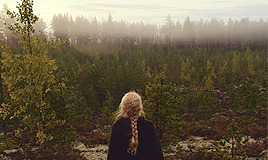



Lolly Willowes by Sylvia Townsend Warner
Published: January 1, 1926 Publisher: Chatto & Windus
The Author
Sylvia Townsend Warner was born in Middlesex, England, in 1893. As a child she was homeschooled after being kicked out of nursery school for mimicking her teachers. Lolly Willowes was her debut novel, published in 1926, and from this work onwards Warner focused on subverting societal norms; later heavily using the themes of rejecting the Church, a need for female empowerment, and independence in her works.* Warner eventually met Valentine Ackland, the two women falling in love and moving in together in 1930. Despite her clear literary skill, she remained a somewhat ghostly and marginal presence in the English literary landscape*. Scholarship and commentary on Townsend’s work has burgeoned over the last twenty years, and as of 2021 all her novels were in print simultaneously for the first time.
˗ˏˋ ´ˎ˗
The Story
Lolly Willowes, always so gentle and accommodating, suddenly announces that she is moving, alone, to the countryside. To her overbearing family in London, it is a disturbing and inexplicable act of defiance. But Lolly will not be swayed, and in the depths of the English countryside she gradually discovers not only freedom and independence, but also, unexpectedly, her true vocation.
˗ˏˋ ´ˎ˗
The Vibe: satirical, city life to country village, whimisical, pagan villagers, deals with the devil, nature appreciation, living authentically
The Style: comedy of manners, wry humour, feminist, social critique
Trigger Warnings: parental death
˗ˏˋ ´ˎ˗
The Review
Lolly Willowes; or The Loving Huntsman was written by Sylvia Townsend Warner and published in 1926. It is an early feminist classic that was written, as Warner said, because she “happened to find very agreeable thin lined paper in a job lot”. It’s a novel I’m genuinely surprised isn’t discussed morewidely in online reading circles, especially with the increased interest in witches and paganism that has boomed in recent years.
I’m always reticent to share reviews of classic books; what on earth could I possibly add that hasn’t been said more succinctly and more thoughtfully by any number of people before me? However, I absolutely adored this book and wanted to share my appreciation in a small way.
“One doesn’t become a witch to run around being harmful, or to run around being helpful either, a district visitor on a broomstick. It’s to escape all that - to have a life of one’s own, not an existence doled out to by others.”
First and foremost, Lolly Willowes is an examination (and rejection) of traditional Edwardian gender roles. Laura Willowes lives with her loving father at their family home in Somerset. Early in the novel in the wake of her father’s death, Laura finds her life turned upside down as she is forced to move to London to live with her brother Henry and his family. She is naturally absorbed by the household, becoming “Aunt Lolly” after a mispronunciation by her niece. I found it poignant that while living in London Laura is not able to live authentically, and is not even referred to by her actual name. She becomes “of use” to her family, but begins to become weary of the role that she is forced into. The novel is split into three sections, with the first building the examination of the need for single women to remain under the guardianship of a male family member.
During her time at her brother’s house, Laura creates small rebellions from this lifestyle in the form of “impulses of secrecy”, at one point exttravagantly buying out all the Chrysanthemums at a florist and purchasing a guide book and map of the location that the flowers were grown (somewhere in the Chiltern Hills northwest of London). While poring over her map and guide book, Laura appears to come back to herself as she imagines living enveloped in this countryside idyll. In another moment of impulse, Laura announces to her family that she will be moving to Great Mop, a small village in the Chiltern Hills. She is adamant about her choice, and going completely against social expectation, moves there alone.
“When she had come to the top of the Ridge she stopped, with difficulty holding herself upright. She felt the wind swoop down close to the earth. The moon was out hunting overhead, her pack of black and white hounds ranged over the sky. Moon and wind and clouds hunted an invisible quarry. The wind routed through the woods. Laura from the hill-top heard the various surrounding woods cry out with different voices.”
Nature itself has a huge presence in this story, from references to bodies, particularly female ones, in relation to nature and returning to their most essential forms, to the comparison between the natural world vs. cities and the expectations of living in “civilised” society. The descriptive passages about nature truly speak to Townsend’s deep love of the natural world. They are so evocative, they really make you feel the appreciation and awe that Laura felt whenever she explored the area around Great Mop. I wanted to move out to the countryside and explore just like she did.
Rudely, Laura’s nephew Titus decides that he would like to move to Great Mop too. This intrusion is too much for Laura, who tires very quickly of becoming socially and domestically relied upon once again. The book gets truly witchy (and hilarious) when she makes a pact with Satan in order to get rid of Titus through a series of worsening annoyances (Titus being chased by a swarm of wasps is a stand-out moment). This was my very favourite section of the story, especially so as her familiar, a kitten she names Vinegar, appears suddenly in her house, and she is invited to a witches Sabbath attended by other towns-people. It is during the sabbath that Laura truly comes into her own, as she decides that this form of socialising and expectation is absolutely not for her either. “’How are you enjoying your first Sabbath, Miss Willowes?’ he said. ‘Not at all,’ answered Laura, and turned her back on him.” She knows what she wants and will no longer entertain social pressure.
Laura is very much a reflection of Warner herself, who was left devastated after the death of her father. Like Laura, Warner also worked in a munitions factory during the First World War, and I feel that the transference of these major imformative moments brings and extra life to Laura that I personally found very moving. The fusion of very “real” details like this with the supernatural elements of the story give it an extra level of heart that makes the examination of gender roles all the more affecting. Warner put so much of herself into this novel.
The role of women, spinsters and widows is expertly addressed with her final discussion with Satan, who, unlike the fake representation of him at the sabbat, is not horned and oh so evil, but looks like a regular country gent. Even in this scene Satan remains an ambiguous character; is he really there to help or is he just another male figure taking control of women? The reader is able to make up their mind on that one.
“And think, Satan, what a compliment you pay her, pursuing her soul, lying in wait for it, following it through all its windings, crafty and patient and secret like a gentleman out killing tigers. Her soul - when no one else would give a look at her body even! And they are all so accustomed, so sure of her! They say: “Dear Lolly! What shall we give her for her birthday this year? Perhaps a hot-water bottle. Or what about a nice black lace scarf? Or a new workbox? Her only one is nearly worn out.” But you say: “Come here, my bird! I will give you the dangerous black night to stretch your wings in, and poisonous berries to feed on, and a nest made of bones and thorns, perched high up in danger where no one can climb to it.”
Lolly Willowes is a wonderful novel of living authentically and embracing ones own individuality and freedom. It did well in England when it was first released, but even better in France and the US (which is somewhat surprising given the subject matter; it would likely be banned pretty fast in many states if it was released in the US today). If you enjoy Jane Austen’s fantastic prose, I’m certain you will enjoy Sylvia Townsend Warner’s style just as much. If you haven’t already, please pick up this fabulous book and enjoy!
Rating: 🌕🌕🌕🌕🌕
[Goodreads]
#book review#bookblr#reading#books#witch fiction#fiction#witches#witchy#witchblr#Lolly Willowes#Sylvia Townsend Warner#witchy books#witchcore#witchy vibes#witch#witch books
10 notes
·
View notes
Text






The Very Secret Society of Irregular Witches by Sangu Mandanna
Published: August 23, 2022 Publisher: Hodder & Stoughton
The Author
Sangu Mandanna writes books about magical sketchbooks, romantic witches, and characters who discover they’re a lot stronger than they think they are. She was four years old when an elephant chased her down a forest road and she decided to write her first story about it. Seventeen years and many, many manuscripts later, she signed her first book deal. Sangu now lives in Norwich, in the east of England, with her husband and kids.
˗ˏˋ ´ˎ˗
The Story As one of the few witches in Britain, Mika Moon knows she has to hide her magic, keep her head down, and stay away from other witches so their powers don’t mingle and draw attention. She’s used to being alone and she follows the rules...with one exception: an online account, where she posts videos "pretending" to be a witch. She thinks no one will take it seriously. But someone does.
An unexpected message arrives, begging her to travel to the remote and mysterious Nowhere House to teach three young witches how to control their magic. It breaks all of the rules, but Mika goes anyway, and is immediately tangled up in the lives and secrets of not only her three charges, but also an absent archaeologist, a retired actor, two long-suffering caretakers, and the handsome and prickly librarian of Nowhere House, Jamie.
˗ˏˋ ´ˎ˗
The Vibe: cosy, found family, (one-sided) enemies to lovers, romance, eccentric characters, grumpy/sunshine pairing, diverse cast, LGBTQ+ characters
The Style: standalone, cosy romance, easy-going prose, wholesome, whimsical
Trigger Warnings: discussion of past homophobia, child abuse, abandonment issues, sex
˗ˏˋ ´ˎ˗
The Review
You know what? I loved this book.
I’m not a big reader of romance, and am often turned off by cutesy sounding plots, but I am so glad I gave this a go. I was in a pretty bad reading slump, just not really enjoying anything I picked up, but this sweet little novel really pulled me out of that funk. I’ve seen negative reviews of The Very Secret Society of Irregular Witches calling it too “twee” but seriously... the title alone tells you twee is what you’re getting, let alone the protagonist being named Mika Moon. I picked up this book wanting twee, and it was lovingly presented by Mandanna.
As the blurb explains, the plot centres on Mika, an Indian born witch in her early-thirties who only gets to interact with other witches at pre-decided meetings once every three months. These meetings are run by Primrose, the powerful witch and stickler for the rules who raised Mika. The rest of the time the witches avoid each other so as not to draw the public’s attention to their power. When Mika is invited to care for three young witches at Nowhere House, who, going completely against the rules, live under one roof as adopted sisters, she encounters something that she has never had but desperately wants; a family. Now, I’m a sucker for a good found-family trope, and this book really delivers on that front.
“Over the years, Mika had embraced all the things that made her different and had discovered that she liked herself very much. But what was that worth without human connection? How was it possible to live, truly live, without the companionship of other people, without a family formed in any of the thousands of ways families could be formed?”
The writing style is very easy-going, but where Mandanna shines is creating unique and diverse characters, including: Ian, an elder gay “luvvie”-type English theatre actor who knits rainbow scarves; Ken, his Japanese, professional gardener husband; Lucie, the round-cheeked and loving housekeeper; and Jamie, the scowling but handsome Irish librarian. And that’s just the adults of Nowhere House; the three young witches are also fantastic: there’s Rosetta who is 10, black, friendly and an avid reader; Terracotta, 8, Vietnamese, rebellious and fierecly protective of her family, and Altamira, 7, Palestinian, hilarious, and maybe my favourite character in the entire book. And lets not forget Circe, the friendly golden labrador.
One of the outstanding aspects of this story was the examination of intersectionality among the different characters. Each of the witches at Nowhere House not only have magical powers, but are people of colour living in England; “They were witches, they weren’t white, and they’d been born far away. Much as they might all wish otherwise, there would always be people who would question whether they were British enough, normal enough, anything enough.” I also admired the inclusion of Ian and Ken’s desire to protect the young girls, having their own experiences living on the fringes of society. It’s all so thoughtful. And the characters are all so lovely, even cranky Jamie who has “the soul of a cantankerous old man who yells at little kids to get off his lawn”, but in actuality likes kids more than he does most adults. The found family aspect feels so solid in this book; they feel like they have years of history. Nowhere House also feels super cosy and real- I want to move in like yesterday.
“It’s not always enough to go looking for the place we belong,” Jamie said, his eyes on the house ahead. “Sometimes we need to make that place.”
As I said earlier, I’m not massive on the romance genre, but I did enjoy the grumpy/sunshine pairing in this story, it has a good slow-burn progression that felt natural. And it gets a little spicy too, just fyi. I did enjoy that there was reasoning behind Jamies’ attitude; he’s not just a crank for no reason. Like Terracotta, he is fiercly protective of his family unit and puts their safety before anything else.
There is a good level of new witch-lore in this story, from witches going into a state of hibernation if they get seriously injured while their body repairs itself, to the methods Mika uses to harvest ingredients for her potions. The only thing I wanted more of was the inclusion of the lessons Mika delivers to the girls. They’re all so entertaining, especially Altamira, who is a perfectly written child who drops some hilarious swear words even though she’s only seven. And her logic of “I’ll stop when Ian and Jamie do” is totally fair in my book. Seeing more of their growth and development as young witches would have been great, particularly as that was the reason behind Mika’s moving to Nowhere House to begin with.
“The thing is, being a witch is extraordinary,” she said. “It might seem sometimes that all we are is odd and different, but the truth is, we’re amazing. We’re part of the earth below us and the sky above us. Our veins echo the patterns of rivers and roots. There’s sunlight and moonlight in our bones.”
This book was just so nice. I desperately want a sequel or five. There are plenty of options for world building, and I want more of Rosetta, Terracotta and Altamira learning to control their powers. Sangu, if you’re reading- pretty please expand this lovely universe? It was a lovely escape from reality that I will probably return to in the future.
Rating: 🌕🌕🌕🌕🌗
[Goodreads]
#book review#bookblr#reading#books#witch fiction#fiction#witches#witchy#witchblr#The Very Secret Society of Irregular Witches#Sangu Mandanna#witchy books#witchcore#witchy vibes#witch#witch books#reposted due to blog move
29 notes
·
View notes
Text

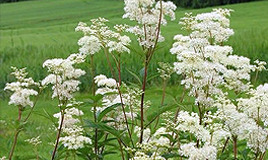



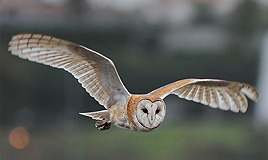
Ghostbird by Carol Lovekin
Published: March 17, 2016 Publisher: Honno Press
The Author
In her own words Carol Lovekin writes “stories that touch on the Welsh Gothic and its most powerful motif: the ghost. They concern the nature of magic and how it threads through the fabric of our lives. I explore possibilities: the fine line between the everyday and the time-shifting world of enchantment. My books are also firmly rooted in reality. I write about family relationships: how people, women in particular, respond to loss and how they survive. I set my stories in Wales, where I’ve lived for several decades: a place whose legends and landscapes inform my writing.”
˗ˏˋ ´ˎ˗
The Story
Nothing hurts like not knowing who you are. Nobody will tell Cadi anything about her father and her sister. Her mother Violet believes she can only cope with the past by never talking about it. Lili, Cadi’s aunt, is stuck in the middle, bound by a promise she shouldn’t have made. But this summer, Cadi is determined to find out the truth.
In a world of hauntings and magic, in a village where it rains throughout August, as Cadi starts on her search, the secrets and the ghosts begin to wake up. None of the Hopkins women will be able to escape them.
˗ˏˋ ´ˎ˗
The Vibe: small welsh village, gossipy locals, magical realism, everyday magic, family secrets, small town, LGBTQ+ subplot
The Style: beautiful prose, standalone, multiple POVs, character driven, coming of age
Trigger Warnings: child neglect, child death, suicide, depression
˗ˏˋ ´ˎ˗
The Review
From the very first page Ghostbird captured my imagination. The prose is so beautifully crafted that it felt special from the start. As I said my my last review, I’m always looking for the next Practical Magic, and this novel is the closest to Alice Hoffman’s gorgeous writing style that I’ve yet come across. I highlighted so many quotes during my read through that it was hard to choose just three to include in this review.
The plot revolves around Cadi, a fourteen year old girl who desperately wants a deeper understanding of her past, and primarily of her father and sister who both died in circumstances that her mother refuses to disclose. Violet, Cadi’s mother, is very clearly depressed and a rather cold woman, so Cadi spends a lot of time at the house next door where her aunt Lilli, her father’s sister, lives in a gorgeous witchy cottage that has been in their family for generations. Violet has forbidden Lilli from sharing any details about the family history with Cadi, which all comes to a head over the course of the story. Living in a small Welsh village where gossip is rife doesn’t help matters; Cadi knows that everyone else is privy to her business and is further alienated by this fact. Lovekin’s prose envelopes us in this world, at times both magical and aching with loneliness.
“The rain whispered against the window. A shiver ran down Cadi’s back, and for a second she saw her ghost-face in the glass. This time it was made of meadowsweet and lavender, and a solitary tea towel left hanging on the washing line.”
There are a number of references to character’s reflections in the story, a device which I found added to the introspective tone with a somewhat magical touch. Cadi feels like part of herself is missing; she doesn’t really know who she is, and frequently examines herself as a ghostly form in windows and screens, part-girl, part-background. She can’t be a fully realised person until she understands why her mother is so cold, how her father died and what happened to her sister.
Cadi’s aunt Lilli (short for Lilwen) desperately wants to help her niece understand her families’ past, but holds true to the promise she made to her sister in law and doesn’t spill the beans. Lilli is the witchiest character in the story, and also the most likeable. (Honestly, I found myself enjoying her subplot more than the main storyline.) Amongst Lilli’s overgrown witches’ garden, in Cadi’s lonely bedroom, and the mysterious lake that she is drawn to, the family history begins to unfold.
Lovekin really captures small internal moments that we all experience beautifully; “Light like bee pollen caught in the fine hairs on her bare arm.” I seriously can’t explain how gorgeous her prose is. She also utilises a literary device that I can’t help but love by making use of weather and nature to punctuate dramatic moments or plot points. Frequent unseen bird calls, and a silent barn owl (or ghost-bird), increase the mystery as Cadi begins seeing a ghostly little girl in and around her house.
“A place this old must surely be a few parts magic, and who knew what ancient charms clung to the brickwork? Old wisdom attached itself, collected in puddles, slipped under eaves and down chimneys. Wild magic loitered in lanes, cunning as magpies. If it danced by the door, the village knew the wisest move was to drop the latch. Myths were entwined with reality as tightly as the honeysuckle around the cottage doors.
One of my favourite features of Ghostbird was Lovekin’s use of Welsh phrases, like “cariad bach”, which translates as “little love”. I live pretty close to Wales myself but have very little knowledge of the language, so it was nice to learn some new words and phrases. I’m also obsessed with some of the Welsh names she included: Morwenna, Gwenllian, Pomona, Lilwen? So cute!
My one negative critique was Violet, and to a lesser extent Cadi’s, attitudes. They both got a little grating as the book went on. Now, I get where Cadi is coming from and she is only 14 years old, but Violet is at points almost irredeemably selfish and overly dramatic. I actually don’t think I’ve disliked a book character more, and that’s saying something. I understand that her past was difficult, but many of the trigger warnings for this book revolve around Violet, and her terrible treatment of her daughter. I feel that the frequent arguments around Cadi wanting to understand her past and Violet refusing to tell her got a bit repetetive, but that was my only real issue with an otherwise beautiful story. I won’t reveal any more of the plot here; it wouldn’t do the book justice. All I can say is, if you like the sound of gentle meadowsweet scents and awaking to a bedroom covered in myserious feathers and leaves, this novel is for you.
“From the first day of August until the last, it rained at least once a day in the village. When the sun broke through, people caught their breath, marvelled at the glimmer turning raindrops to treasure.”
Lovekin’s writing is very special and this novel was a delight to read. I found myself scrolling her Goodreads profile and adding pretty much every other novel she’s written to my TBR list. If any of them are as magically written as Ghostbird, it will be well worth giving them a try.
Rating: 🌕🌕🌕🌕🌑
[Goodreads]
#book review#bookblr#reading#books#witch fiction#fiction#witches#witchy#witchblr#Ghostbird#Carol Lovekin#witchy books#witchcore#witchy vibes#witch#witch books
0 notes
Text


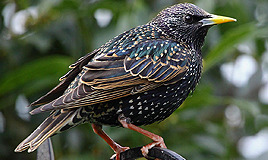
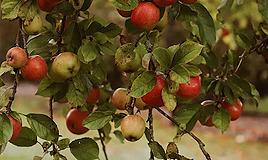


Spells for Forgetting by Adrienne Young
Published: September 27, 2022 Publisher: Delacorte Press
The Author
Adrienne Young is the New York Times and international bestselling author of the Sky and Sea duology, the Fable series, and Spells for Forgetting. When she’s not writing, you can find Adrienne on her yoga mat, on a walk in the woods, or planning her next travel adventure. She lives and writes in the Blue Ridge Mountains of North Carolina.
˗ˏˋ ´ˎ˗
The Story
Spells for Forgetting is a deeply atmospheric story about ancestral magic, an unsolved murder, and a second chance at true love.
Emery Blackwood’s life changed forever the night her best friend was found dead and the love of her life, August Salt, was accused of murdering her. Years later, she is doing what her teenage self swore she never would: living a quiet existence on the misty, remote shores of Saoirse Island and running the family’s business, Blackwood’s Tea Shoppe Herbal Tonics & Tea Leaf Readings. But when the island, rooted in folklore and magic, begins to show signs of strange happenings, Emery knows that something is coming.
˗ˏˋ ´ˎ˗
The Vibe: remote island, secretive villagers, magical realism, autumnal atmosphere, omens in nature, everyday magic, deep betrayals, small town, secrets everywhere
The Style: breadcrumb murder mystery, standalone, multiple POVs, flashbacks, character driven
Trigger Warnings: child abuse, domestic abuse, murder, sex
˗ˏˋ ´ˎ˗
The Review
When I hear that a book is “deeply atmospheric”, containing a story infused with ancestral magic and folklore, I’ll instantly add it to my TBR. I can’t help myself. I think I’m still desperately trying to find my next Practical Magic; a book whose prose perfectly evokes the sort of magickal world I want to run away to. I’d been looking forward to reading Spells for Forgetting since I first read the summary, and finally found myself getting lost in the mystery this past week.
Our protagonist is Emery, who, in her thirties, owns Blackwood’s Tea Shoppe, a family business that has been handed down through generations and is a responsibility that she never wanted. Emery lives on Saoirse, a remote island just off Seattle; a place that is saturated in ancestral magic (and feels very much like it would exist in the Practical Magic universe). What I loved about Saoirse is that magic isn’t a secretive, shameful thing that one family is “cursed” with and that the townspeople fear; magic is a part of everyday life on the island. Families own grimoires containing spells passed down the generations, characters provide magical first aid using plants and herbs, and they celebrate sabbats. (This book gets bonus points from me for mentioning more sabbats other than Samhain- Imbolc and Beltane also get a shout out!)
“There was a whisper in the air when I lifted the lid on the box. For a moment, I thought it was some kind of warning, my mother touching the veil of the Otherworld in a last plea from her to let the past go.”
Emery was part of a small friend group as a teen on the close-knit island, which included her first love, August Salt, her best friend Lily, and Dutch, who is now her partner. Emery and August’s relationship was super peachy until a terrible event swept Saoirse one night, causing August to flee mysteriously without so much as a goodbye. Now, he has to return to the island one final time and old wounds are reopened.
One choice Young made which I really appreciated was that Emery and August are not teens or in their early twenties; they are very firmly in their thirties and it’s a demographic that I find isn’t represented massively in literature like this. (Can you tell I’m the same age as them?)
Spells for Forgetting is written from multiple perspectives, including Emery, August, various famiy members and at one point even the island itself (an idea that I absolutely loved). I particularly enjoyed chapters involving Aunt Albertine, who provides some lovely blindness representation. The island of Saoirse is also beautifully fleshed out; it really feels like it could exist out there somewhere off the coast of Seattle. It becomes a central character of the novel whose moods you can read as well as the human cast members.
“The island had been restless all day, the air growing colder. Since the leaves had turned, nothing had felt right, and I had a feeling there was a deeper work at play. Saoirse was finally digging up the things we’d buried.”
The magical realism element in this novel is super enjoyable and was probably my favourite part of the book all around. I also found it interesting that for the majority of the narrative the plot could have been a straight up drama without any inclusion of magic at all; it was nice that it felt like magic was a part of the lore without it mattering to the story, but then it becomes more obvious that it is intrinsically linked as the mystery is revealed.
As the plot is told from multiple POVs, the chapters are short which allows you to take in the story in bite-sized chunks if needed. (This can also cause an “I’ll just read one more chapter… and another one…” situation as each breadcrumb of the mystery is dropped.) Unfortunately, the flow of the writing did trip me up a few times, I’m not quite sure why, as the prose is really very simple, and while I don’t dislike first-person perspectives, when they are also split into multiple character POVs I find that most writers struggle to create individual voices, which was the case with this book.
Honestly, I’m not a huge fan of romance stories, but inevitably this is a central theme of the novel as Emery tries to get to the bottom of the abrupt end to her relationship with August. A slow-burn, kind-of-enemies to lovers theme makes absolute sense as Emery revisits the past in order to discover the truth of what happened the night August left, but honestly, Emery and August are a little bit cringe; the writing gets pretty over the top when demonstrating the strength of their relationship as it reignites; “She was so beautiful that I could hardly stand to look at her. It physically hurt to feel her skin under my fingertips.” That’s just a little over-dramatic, right? I found myself zoning out whenever they spoke about each other.
“I’d been in love with August Salt since before I knew what the words meant. I don’t know when it happened - the narrow space between seconds, when a spark like the birth of a hundred stars found a home in my blood.”
Full Disclosure: There are some spicy scenes in the novel, and while Spells for Forgetting is suitable for a teen audience, I did find the juxtaposition between YA writing style and adult themes was a bit jarring at times.
Overall, I really enjoyed spending time on Saoirse, and would definitely pick up a sequel if one should appear. (The book is currently a stand-alone, but I feel like the ending left enough open, while resolving the main plot points, to allow for a return to the island.) A simple writing style, intriguing plot and fantastic setting make this one worth picking up.
Rating: 🌕🌕🌕🌗🌑 [Goodreads]
#book review#bookblr#reading#books#witch fiction#witches#witchy#witchblr#Spells for Forgetting#Adrienne Young#witchy books#witchcore#witchy vibes#witch
6 notes
·
View notes